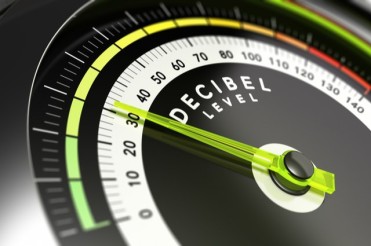A noise survey typically involves taking noise measurements throughout a whole plant or a specific section for the purpose of identifying areas that are noisy.
A survey is used in establishing whether employees are exposed to noise levels that are exceeding the exposure limits that regulation set (the Control of Noise at Work Regulations 2005 in the United Kingdom).
What Noise Surveys Involve?
 Noise can be measured by a sound level meter. It reads SPLs (Sound Pressure Levels) in dB(A), and the peak sound pressure, the highest noise level reached in Pa (Pascal). There are two kinds of sound meters: direct reading and integrated meters. Meters that integrate the reading give an average over a certain period, which is a technique that is essential where there are wide variations in sound levels. That value is called the Leq or continuous equivalent noise level, which is often normalised or measured over a period of eight hours. The sound level meter has to be calibrated before as well as after each session of measurement. To take measurements, the hand-held instrument necessary at the arm’s length, particularly at ear height for people exposed to the noise. A measurement is made at each ear.
Noise can be measured by a sound level meter. It reads SPLs (Sound Pressure Levels) in dB(A), and the peak sound pressure, the highest noise level reached in Pa (Pascal). There are two kinds of sound meters: direct reading and integrated meters. Meters that integrate the reading give an average over a certain period, which is a technique that is essential where there are wide variations in sound levels. That value is called the Leq or continuous equivalent noise level, which is often normalised or measured over a period of eight hours. The sound level meter has to be calibrated before as well as after each session of measurement. To take measurements, the hand-held instrument necessary at the arm’s length, particularly at ear height for people exposed to the noise. A measurement is made at each ear.
Assessing Risk of Hearing Loss
When evaluating the risk of hearing loss, the position of the microphone is supposed to be closer to the operative’s ear for whose benefit the data of the noise exposure is being taken. For stationary workers, the microphone is supposed to be placed above the shoulder or closer. If the employee is working in a standing position, then the microphone is supposed to be positioned ideally 1.5 m above the floor. If the employee is working in a sitting position, then the microphone is supposed to be positioned ideally at one metre above the floor.
Working Environments With Impulse
In working environments that have an impulse, variable or intermittent noise levels (but in cases where the movements of a worker can’t be accompanied or followed as well), the sound level meter isn’t designed to determine the average exposure of a person to noise over the whole or part of their shift. One of the solutions is using PSEM (Personal Sound Exposure Meter). The PSEM should sit on the selected operator’s shoulder and record the noise exposure. It then determines statistically the noise over the same exposure groups. Also, personal noise dosemeters may be worn for day or over several working days. This depends on the tasks’ consistency performed every day. In this scenario, it’s not necessary for the person responsible for taking the measurement of the noise to be present. The noise data is going to be collected and then downloaded for analysis at when the measurement period ends.
About Lighthouse Acoustics
With more than a decade and a half experience in acoustic consultancy, Lighthouse Acoustics’ director has extensive knowledge in all the major building sectors. They include healthcare, education, retail, leisure, industrial, commercial and residential. We can advise you on the most suitable noise surveys needed and we can offer a quick turnaround of survey and report.

Add comment